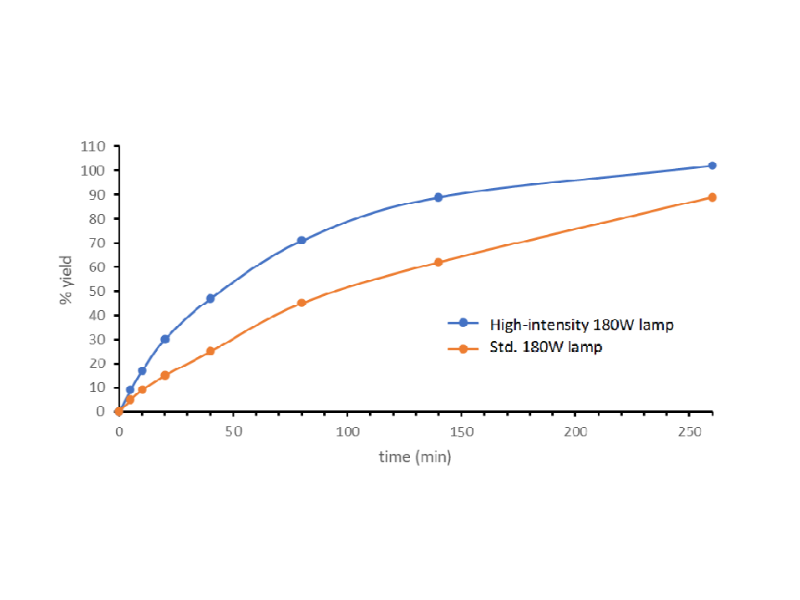A new application report from Uniqsis demonstrates how their new high intensity Borealis™ LED light source significantly increases the rate of a metal-catalysed photoredox reaction.
Building upon the Nobel Prize winning work of Macmillan et al, photoredox catalysis has emerged as an important and powerful bond-forming strategy in chemical synthesis. Key to the practical implementation of this methodology in the laboratory is the availability of affordable and easy to use benchtop photoreactor systems.
Available in activation wavelengths from 365nm up to 525nm the Borealis™ LED light source is a proven device for performing photochemical reactions in both batch and flow modes. Recently, Uniqsis introduced a high-intensity version of the 180W Borealis LED light source. This new version uses high output LEDs that, being more efficient than the original Chip-on-Board (COB) LEDs, produce a higher light output for the same power consumption.

In this application report, two time-studies were performed in a Uniqsis Solstice 12-position multi-tube batch photoreactor varying only the version of 420nm Borealis LED lamp. In each case, the LED light source was connected to a 180W Borealis digital power supply. The results illustrate how the increased photon flux provided by the new 420nm 180W Borealis LED lamp significantly increase the rate of a metal-mediated photoredox decarboxylative arylation (Macmillan reaction) when compared to the original Mk1 version.
To read the application report 33 in full please visit https://uniqsis.com/fcApplications.aspx#2126 or contact Uniqsis now on +44-1223-942004 / info@uniqsis.com.
